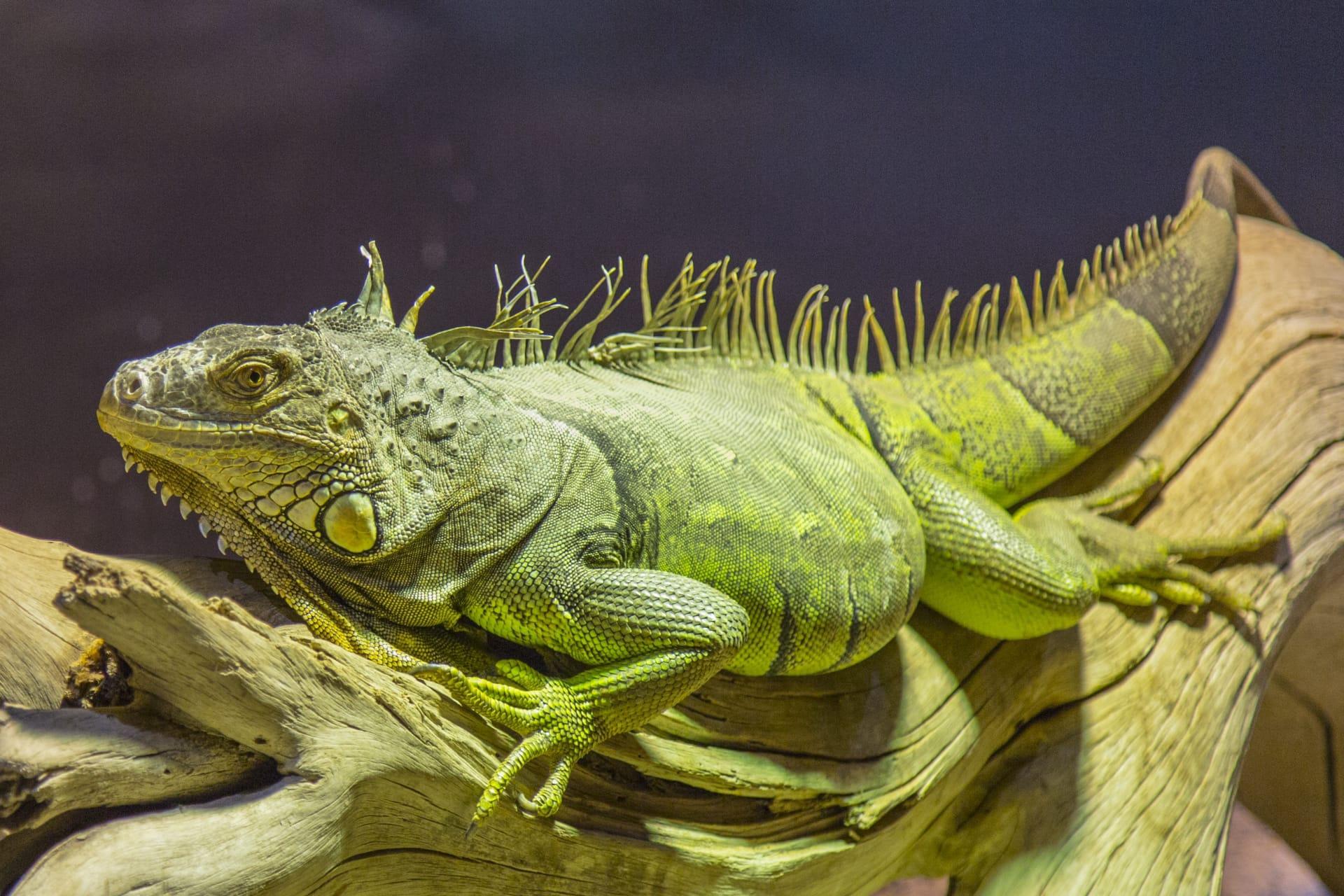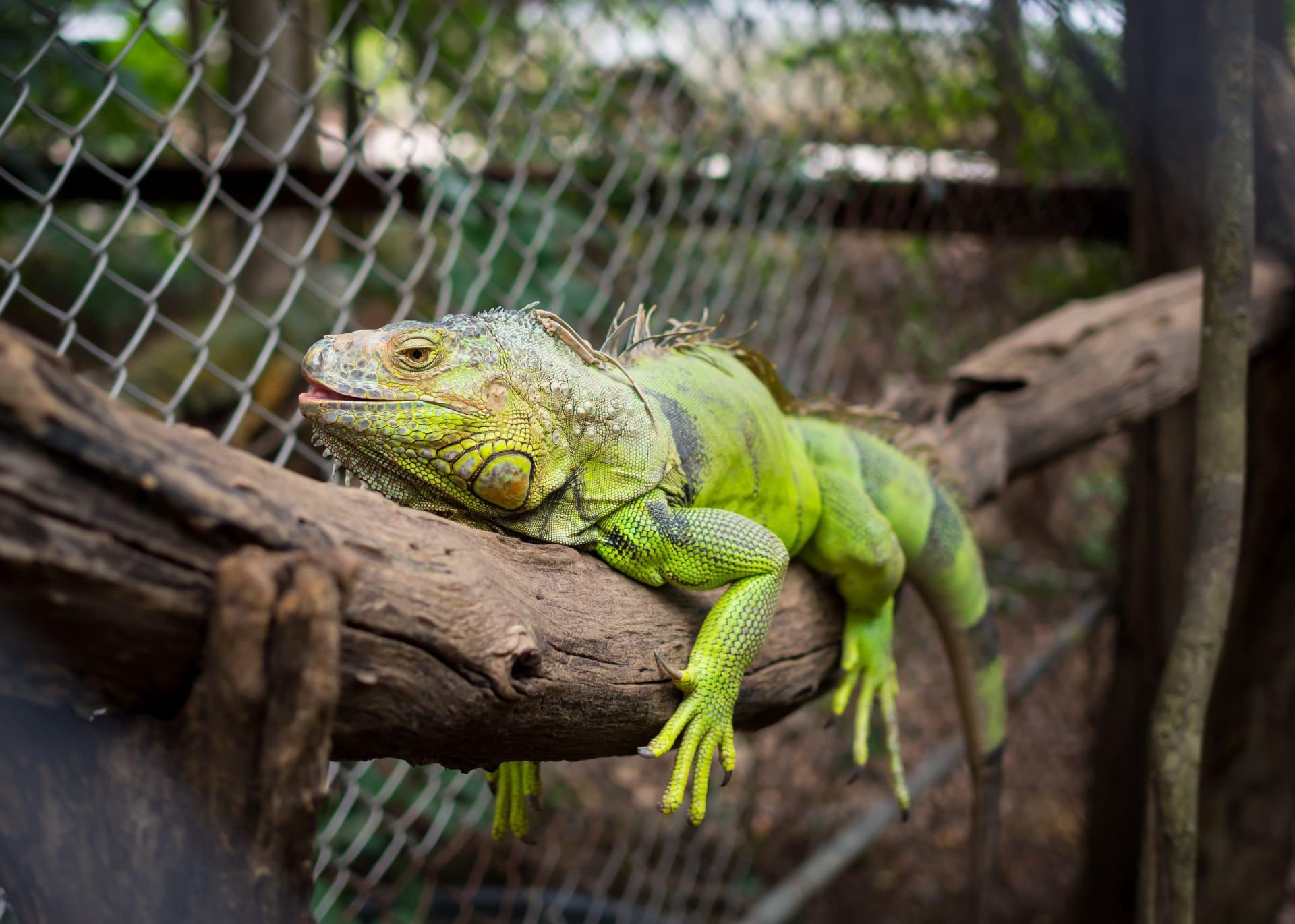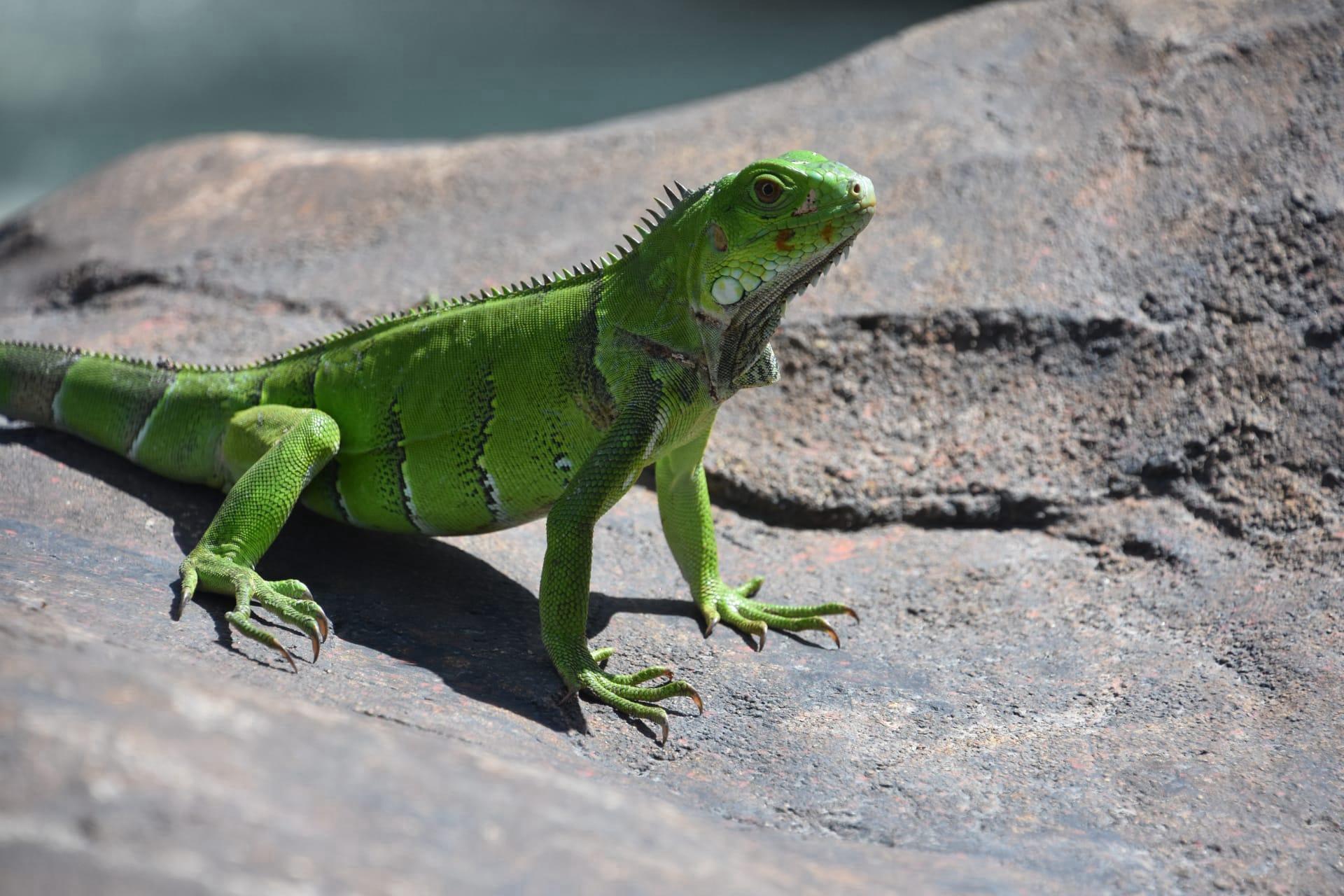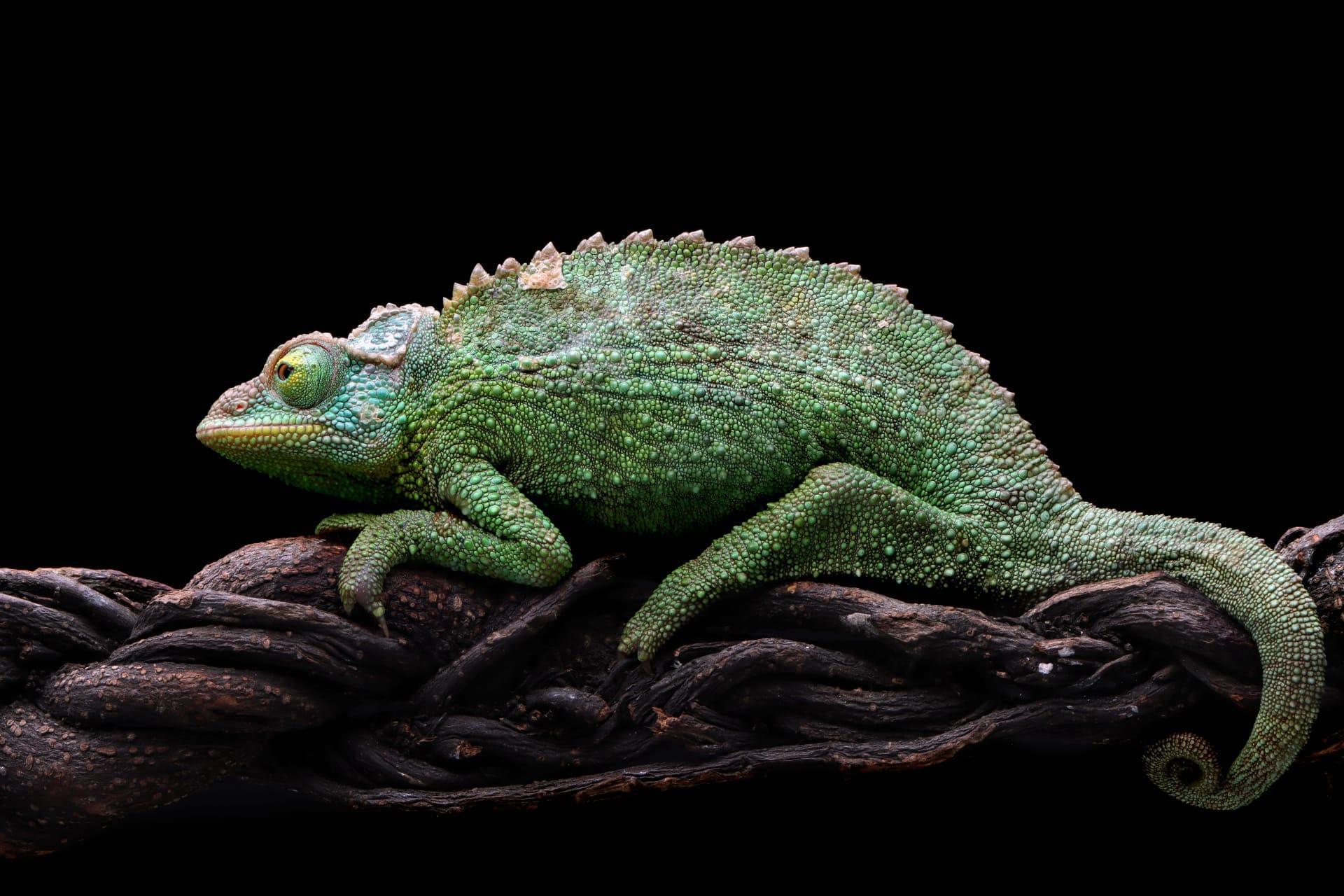1
The Green Iguana, a magnificent creature native to Central and South America, boasts an impressive size among its reptilian peers. Adult Green Iguanas typically measure around 5 to 7 feet in length, including their lengthy tail, which constitutes over half of their total size. This tail is not just for show; it serves as a formidable weapon. When threatened, an Iguana can whip its tail with enough force to break human skin or even fend off predators like large birds and small mammals. The power behind each tail strike is a testament to the iguana's muscular build and agility.
Another striking feature of the Green Iguana is its vibrant coloration. While young iguanas often display a bright green hue, aiding in camouflage among leaves, adult iguanas' colors can range dramatically. Factors such as age, mood, and health influence their color, resulting in shades from green to brown, blue, and even pink. This color variability is not just a visual spectacle; it plays a critical role in thermoregulation. Iguanas bask in the sun to warm up, and darker colors absorb more heat, helping them regulate their body temperature in varying environmental conditions.

2
Green Iguanas have a unique physiological adaptation: a "third eye" located on the top of their head. Officially known as the parietal eye, this light-sensing organ doesn't provide a detailed vision like their two primary eyes. Instead, it detects changes in light and dark, helping the iguana sense movement and the presence of predators overhead. This third eye plays a crucial role in their survival, especially considering their arboreal lifestyle, where threats often come from above.
Diet is another fascinating aspect of these reptiles. Green Iguanas are primarily herbivorous, a rarity among lizards. They feed on a variety of leaves, flowers, and fruits, and their digestive systems have evolved to process this plant-heavy diet efficiently. This herbivorous tendency is vital for their survival in the wild, as it allows them to thrive in environments where animal prey is scarce. It also impacts their overall health and growth, making their dietary habits a central part of their care in captivity.

3
Green Iguanas possess remarkable swimming abilities. They are often found near water and are adept swimmers, using their powerful tail to propel themselves through water with ease. This skill is a vital escape mechanism, allowing them to evade predators by diving into water and swimming away swiftly. Their ability to hold their breath underwater for extended periods further aids their aquatic escapades, showcasing an impressive adaptation to their environments.
Communication among Green Iguanas is a complex and nuanced aspect of their behavior. These creatures use a combination of visual signals, such as head bobs, body postures, and dewlap displays (the dewlap is the flap of skin under their chin) to communicate. These signals play a vital role in establishing social hierarchies, indicating territoriality, and even in courtship rituals. The subtleties of their communication highlight a social complexity often overlooked in reptiles, offering a glimpse into their intricate social dynamics.

4
The lifespan of Green Iguanas in the wild versus in captivity presents a stark contrast. In their natural habitat, these reptiles typically live for around 10-12 years. However, under optimal conditions in captivity, where threats are minimal and nutrition and healthcare are well-managed, they can live up to 20 years or more. This significant difference underscores the impact of environmental factors on their longevity and the importance of proper care for captive iguanas.
Green Iguanas display an intriguing behavior known as "autotomy." This survival mechanism allows them to detach their tail when caught by a predator. The detached tail, which continues to wriggle, often distracts the predator, giving the iguana a chance to escape. Remarkably, they can regenerate a new tail, though the new one may not match the original in size and color. This ability reflects an extraordinary evolutionary adaptation for survival, showcasing the resilience and adaptability of these creatures.

5
The breeding behavior of Green Iguanas is particularly noteworthy. Females lay clutches of 20 to 70 eggs, and interestingly, they only mate once a year. After mating, the female carefully selects a suitable spot to dig a burrow for her eggs, displaying a strong instinct to protect her future offspring. The eggs are then incubated for about 90 days before hatching. This reproductive strategy, involving large clutches and infrequent mating, balances the survival odds for the offspring in their natural habitats, where predation and environmental factors pose significant threats.
The adaptability of Green Iguanas to diverse environments is remarkable. While they are native to the rainforests of Central and South America, they have successfully adapted to a variety of habitats, including beaches, swamps, and suburban areas. This adaptability is partly due to their dietary flexibility and ability to regulate their body temperature according to environmental conditions. However, this has also led to their status as an invasive species in some regions, such as Florida, where their presence disrupts local ecosystems. This aspect of the Green Iguana's ecology highlights the delicate balance between species and their environments.